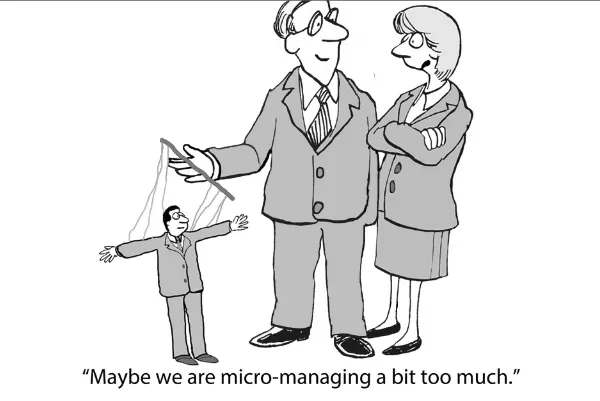
The Art of Helping Without Micromanaging: A Guide for Hands-On Leaders
The Art of Helping Without Micromanaging: A Guide for Hands-On Leaders
In today's fast-paced business world, the line between being a supportive leader and a micromanager can often blur. At CoreTactic, we understand the delicate balance required to provide hands-on support without stifling your team's autonomy and creativity. Drawing insights from a recent Harvard Business Review article by Colin M. Fisher, Teresa M. Amabile, and Julianna Pillemer, we've compiled a guide to help you master the art of effective leadership support.
The Micromanagement Dilemma
Micromanagement has become a dirty word in modern workplaces, and for good reason. Excessive intervention can demoralize employees and hinder productivity. However, a completely hands-off approach isn't the answer either. Research shows that when employees receive appropriate managerial support, they perform better than when left entirely to their own devices.
So, how can you provide the right level of assistance without crossing into micromanagement territory? Let's explore three key strategies.
1. Perfect Your Timing
Contrary to popular belief, preemptive intervention isn't always the best approach. The Harvard Business Review study found that the most effective leaders wait until their team members recognize the need for help and are ready to receive it.
CoreTactic Tip: Instead of jumping in at the first sign of trouble, observe and listen. Wait until your team has had a chance to engage with the task and experience its challenges firsthand. This approach ensures that your help is both welcomed and valued.
2. Clarify Your Role as a Helper
When you do step in, it's crucial to frame your involvement correctly. Your team needs to understand that you're there to support, not to judge or take over.
CoreTactic Tip: Explicitly state your intentions. For example, you might say, "I'm here to help you succeed, not to evaluate your performance." This clarity can alleviate anxiety and create a psychologically safe environment where team members feel comfortable seeking and receiving assistance.
3. Align Your Involvement with Team Needs
The rhythm and intensity of your involvement should match your team's specific needs. The Harvard Business Review article identifies two primary patterns of involvement:
1. Concentrated Guidance: This involves intense collaboration over a short period, typically a few days. It's suitable for complex challenges that can't be resolved with quick feedback.
2. Path Clearing: This approach involves briefer, intermittent interventions to help with ongoing issues. It's about removing obstacles and providing relief in smaller ways.
CoreTactic Tip: Assess the situation carefully to determine which approach is most appropriate. Remember to maintain a general understanding of the project to ensure your interventions are meaningful and not superficial.
The Remote Work Challenge
In today's increasingly remote work environment, these strategies become even more critical. Without the benefit of impromptu office interactions, it's easy to either over-check or become too disconnected.
CoreTactic Tip: In remote settings, strive for a balance. Regular check-ins are important, but make sure they're purposeful and aligned with your team's workflow. Use the strategies outlined above to ensure your virtual presence is supportive rather than intrusive.
Conclusion
Mastering the art of hands-on leadership without micromanaging is a critical skill in today's business landscape. By timing your interventions wisely, clearly communicating your role as a helper, and aligning your involvement with your team's needs, you can provide invaluable support that enhances performance and morale.
At CoreTactic, we believe in empowering leaders to bring out the best in their teams. By implementing these strategies, you can create a work environment where help is welcomed, valued, and truly effective.
Remember, the goal is to be a resource for your team, not a roadblock. With practice and mindfulness, you can become the kind of leader who knows just when and how to lend a helping hand.
---
This blog post is based on insights from "How to Help (Without Micromanaging)" by Colin M. Fisher, Teresa M. Amabile, and Julianna Pillemer, published in the January–February 2021 issue of Harvard Business Review.
